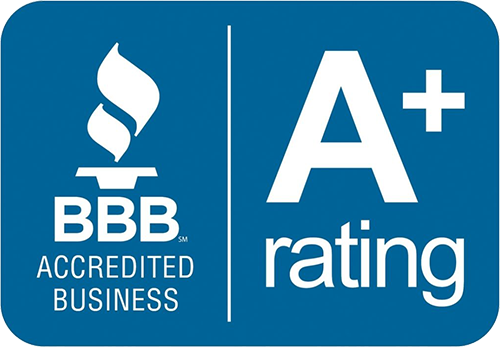FAQ
When you realize you have come across some form of damage caused by pests, you probably have an array of questions about it. There are different types of
pest control such as ant control, termite control, & mosquito control. Different kinds of pests need different kinds of controls. Termite control can be confusing because of the sneaky nature of the insects. Very often, it takes a trained eye to notice beginning damage. Here, we’ve answered some of the questions we regularly receive from customers.
We hope the information is helpful to you! If you still have questions about our termite control services after reading through them, however, please feel free to contact us today.
Answers to Our Most Commonly-Asked Questions About Termite Control
Q: Why do you charge for your
termite inspections ?
A: Our inspectors are not compensated by a sales commission. That means that they still get paid at the end of the week whether they sell a job or not. We feel that this approach allows the inspector to concentrate on your home in order to provide a professional service instead of worrying about a paycheck.In addition, if a treatment is needed, then the inspection fee is applied to the cost of treatment. Why should your treatment cost be increased to pay for somebody else’s free inspection? Remember, nothing in life is free; you get what you pay for.
Q: What is the difference between a swarming termite and a flying ant?
A: Termites and ants are both social insects. This means that they live in a colony and the members of the colonies are broken down into different groups depending on the jobs they perform for the colony. These divisions are called castes. Swarming termites and flying ants are the part of the colony called the “winged reproductives." Their sole function in the colony is to fly out, in a swarm, pair up and mate to form a new colony elsewhere.Many people have found that a swarm of insects have emerged in their home and want to know how to tell the difference between termites and ants. The first (and easiest) thing to do is look for a distinct “waistline” on the insect. Insects have three body segments: head, thorax and abdomen. Ants generally have a very distinct transition between the thorax and the abdomen giving them an hourglass-shaped waistline. The body of the termite does not have this pinched-in “waistline." Their bodies are more cylindrical or cigar-shaped.In addition, both have two pairs of wings. The wings of the termite are all the same length. The front pair of wings on an ant is longer than the rear pair. One other thing that you can check, if you have a hand lens, is the antennae. The antennae on the ant have an “elbow” or a distinct bend in them where the antennae on the termite are relatively straight.
Q: What kind of termites are in Charlotte?
A: The termites that are indigenous to this area (the Piedmont of North Carolina) are subterranean termites. This simply means that they live in the soil. Termites are soft bodied and their “skin” does not retain moisture well, so they dwell in the soil to maintain a constant moisture source. Termites are designed to eat cellulose material. The problem is that they cannot tell the difference between a tree that has fallen in the woods and a 2 x 10 that is in a house. Termites will infest wood/cellulose. They break down the cellulose and return it to the colony to feed the rest of the colony and then return to the food source to start the cycle over.
Q: How do you treat a house for termites?
A: There are two main methods for treating subterranean termites: conventional liquid treatments of the soil and baiting systems. The conventional liquid treatment of the soil works by placing a termiticide (a chemical designed and specifically labeled for termite treatments) in the soil in any and every place that the structure comes in contact with the ground. This is a simplified explanation because the application of a termiticide involves digging trenches adjacent to the foundation walls both on the inside and the outside, including all piers under the structure. It also includes drilling all concrete slabs at the construction/expansion joints every 12 inches all the way around. There are other requirements, but you should be able to see that this approach is a very labor-intensive job. The purpose of this approach is to get the termiticide into the termite feeding cycle either to disrupt it with a repellent termiticide or affect the physiology of the colony with a non-repellent termiticide.The baiting systems attempt to draw termites into a series of plastic bait stations that are installed in the ground around the structure. The stations contain an untreated cellulose medium at the onset. The inspector inspects the inside of each station on a routine schedule and if/when termites are found in the station, then the active ingredient is added to the bait station. The termites then carry the active ingredient back to the colony as food where it would affect the colony.Killo does not offer any baiting systems. In our research, we have found that the baiting systems are not as effective as the liquid soil treatment method; therefore Killo continues to use the conventional liquid soil treatment approach.
Q: Do I have to have a service agreement on my home to sell it?
A: No, unless the buyer will not consider buying a house without one. Most lenders, i.e. banks or mortgage companies, require that an inspection be performed for the purpose of determining the presence or absence of wood-destroying insects and/or their damages. This inspection can be performed whether or not the home is covered by a contract. If the home is sold through a cash sale, then an inspection may not be required. There is no requirement in the rules and regulations of the Structural Pest Control Division (SPCD) of the Department of Agriculture that an inspection must be done as part of the sale or refinance of a structure. The SPCD regulates our industry.
Q: What is the difference between a WDIR and a Termite Letter?
A: WDIR stands for Wood-Destroying Insect Information Report. In North Carolina, this form is the WDIR 100 form. This is the only form that is allowed for properties involved in a sale or refinance by the rules and regulations of the Structural Pest Control Division (SPCD) of the Department of Agriculture. The SPCD regulates our industry. If a report is issued on the presence or absence of wood-destroying insects in a structure involved in a sale, then it must be issued on this form. A Termite Letter is the lingo used by many to refer to the WDIR. Unfortunately, it is an over-simplification of the nature of the WDIR. The WDIR reports on much more than termites. It addresses other wood-destroying insects including powder post beetles, old house borers, carpenter bees, carpenter ants, etc. In addition, it addresses conditions that are conducive to an infestation of termites and areas that are inaccessible for inspection.
Q: What Damage Can Mosquitoes Cause?
A: Mosquitoes pose a risk to you and your home that is hard to recognize sometimes. Mosquitoes transmit diseases such as West Nile Virus, which can be passed from the mosquito to humans through their bite. Mosquitos are also drawn to any standing water on your property. Having standing water like bird baths, mulch piles, or anything similar will attract female mosquitoes because these are prime egg-laying spots for them.
Q: How Often Should a Home be Treated for Mosquitoes?
A: It may seem that you would want mosquito control treatments every spring and summer, but the length of effectiveness is dependent on multiple variables. Temperature, humidity, surfaces treated, and materials are all factors taken into consideration for mosquito control.

